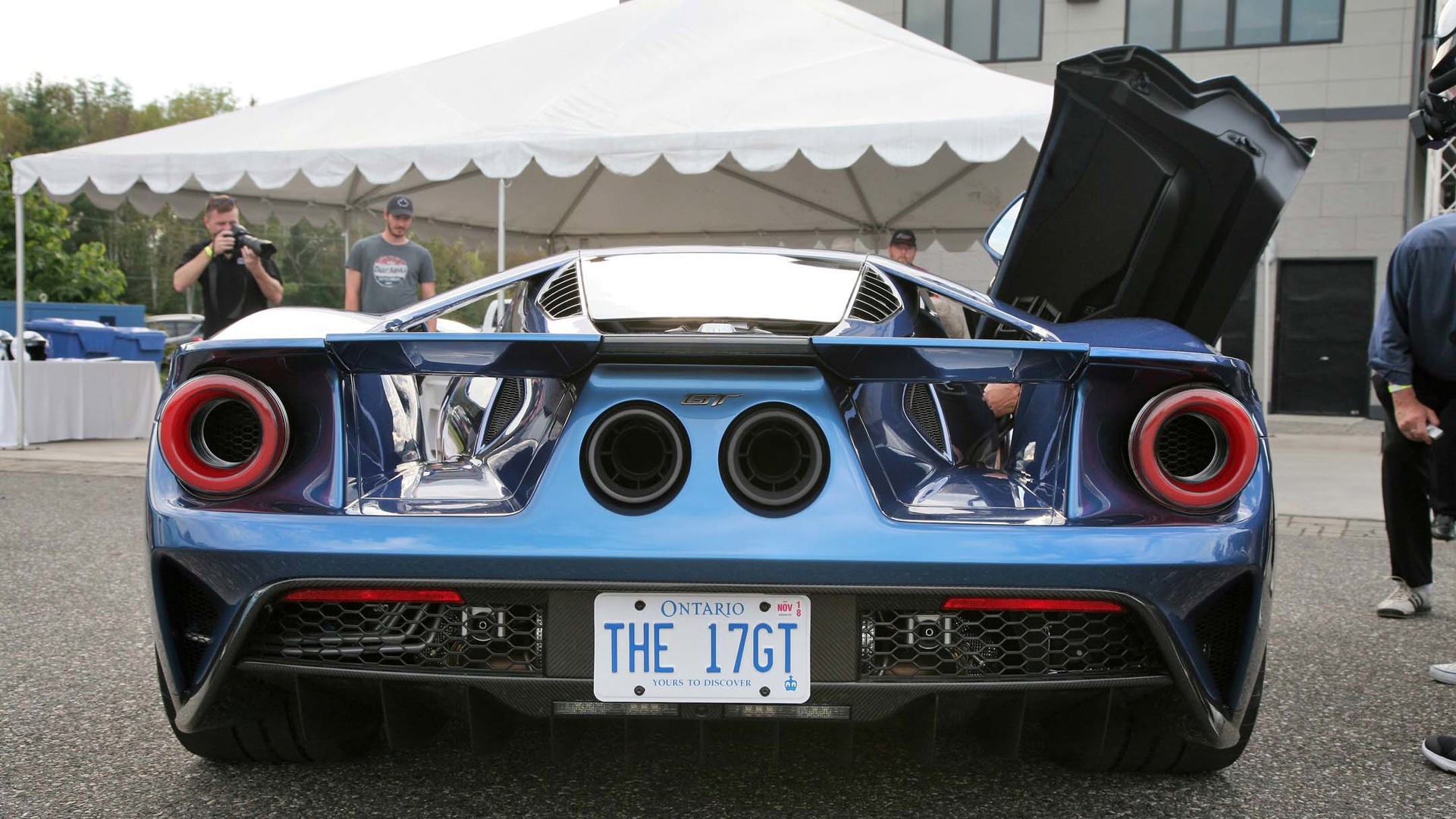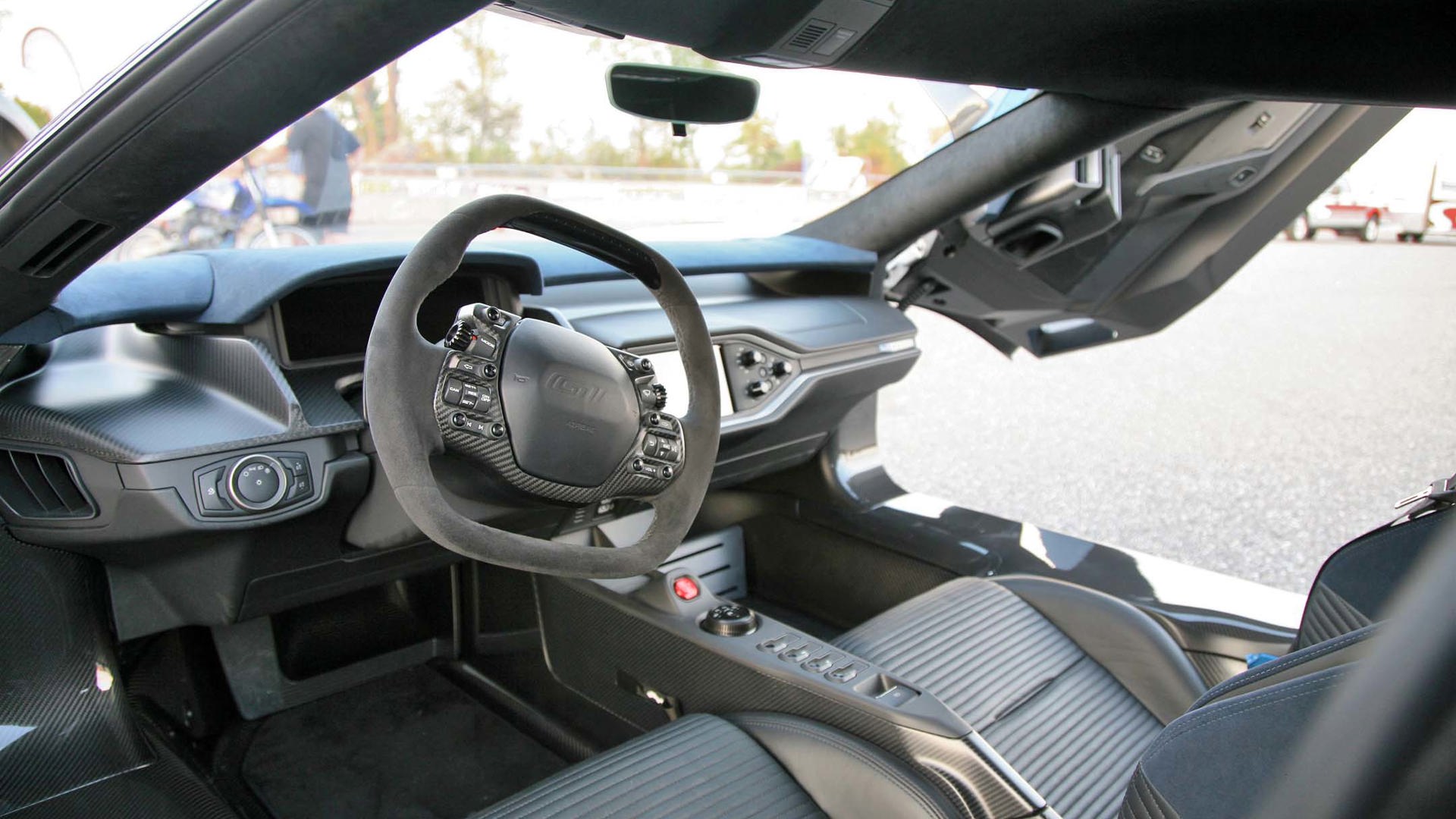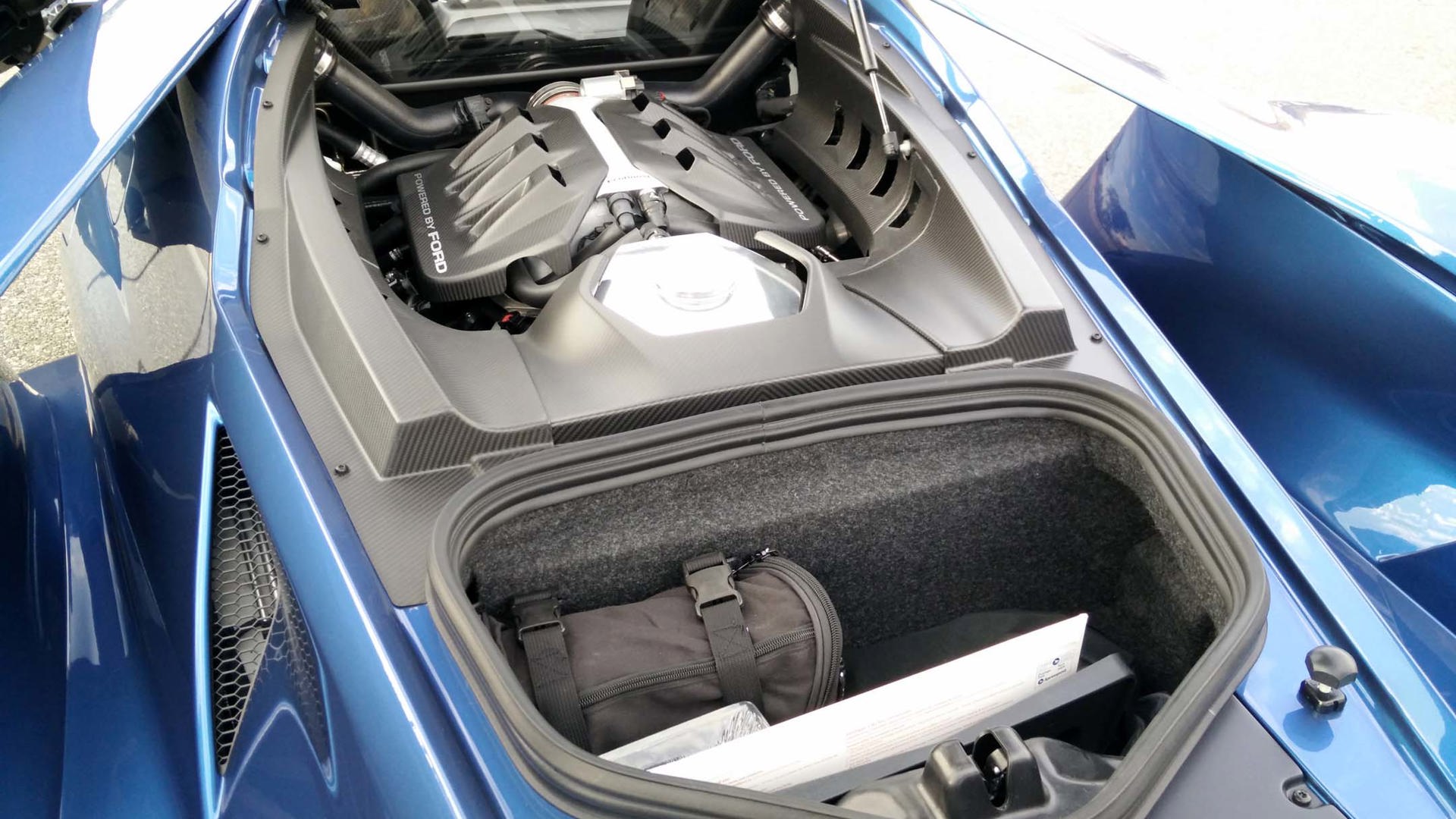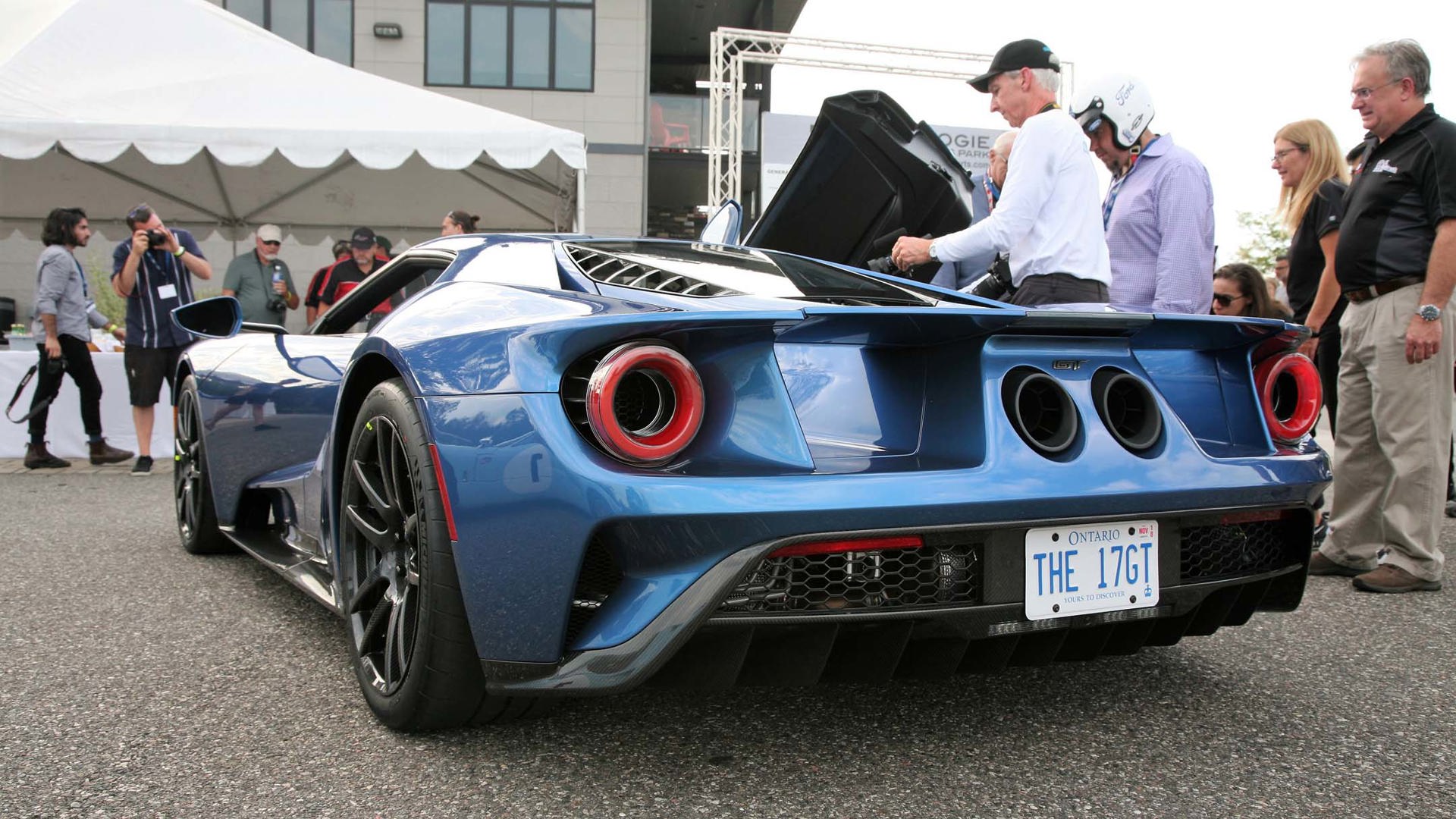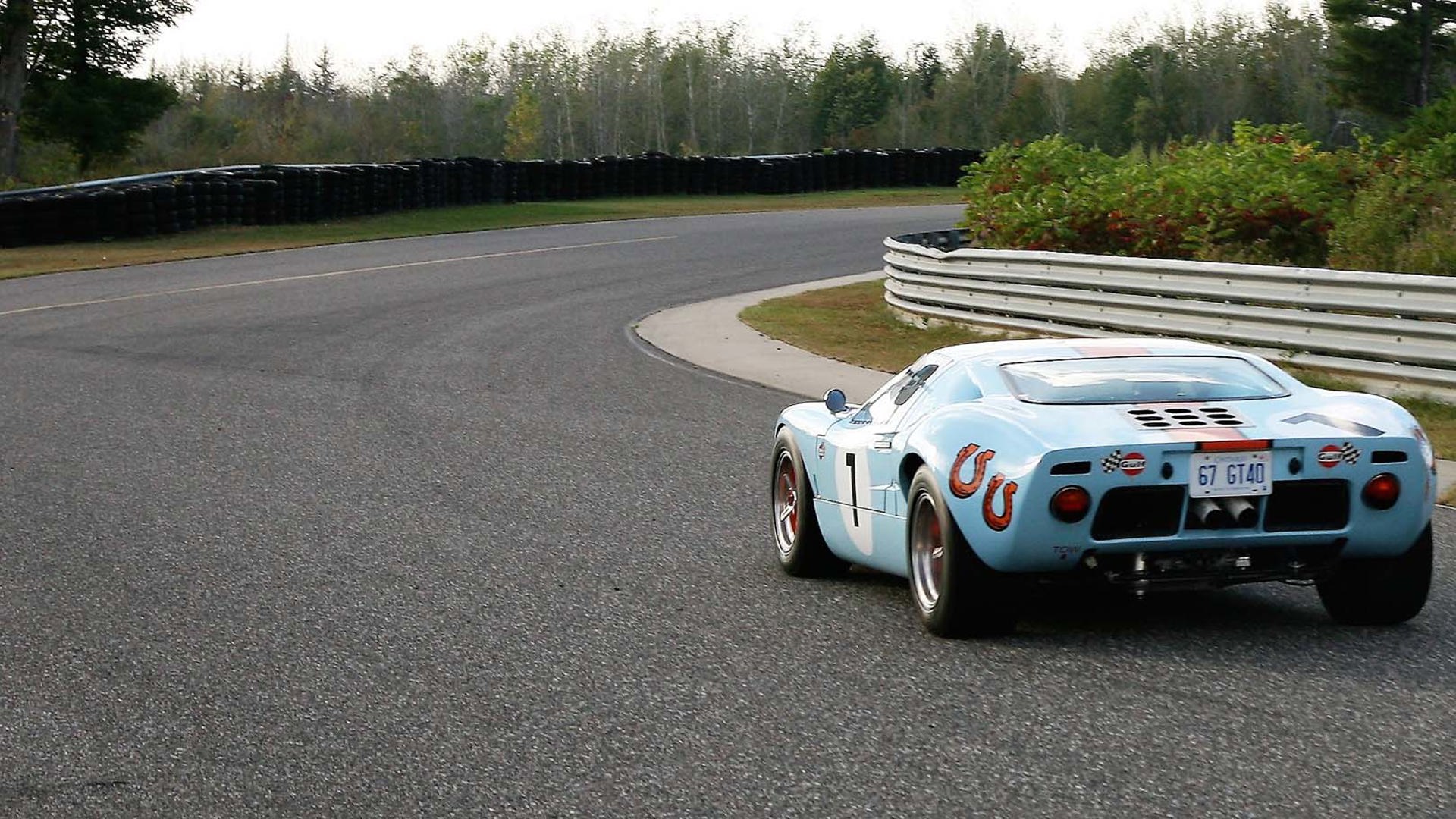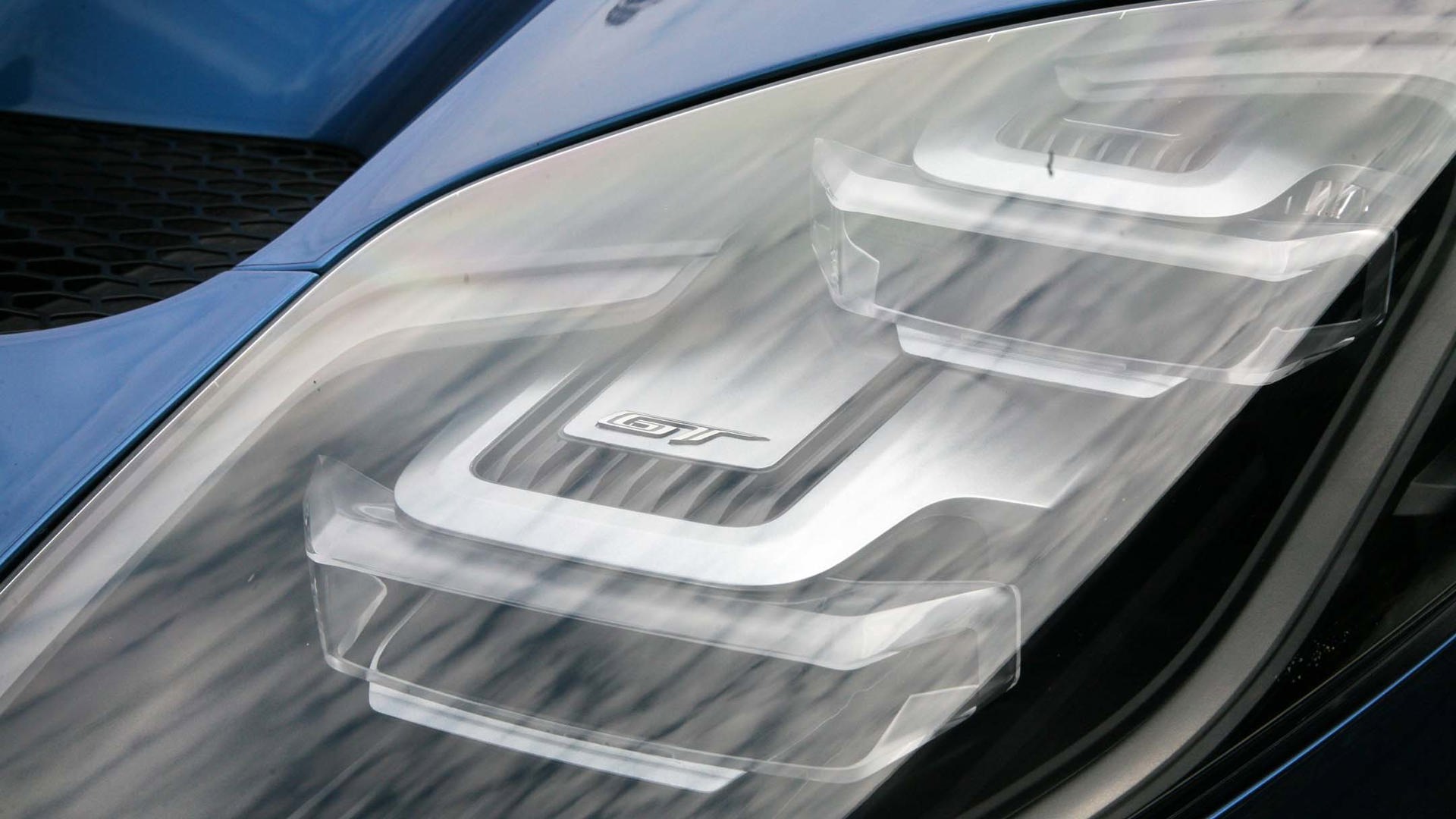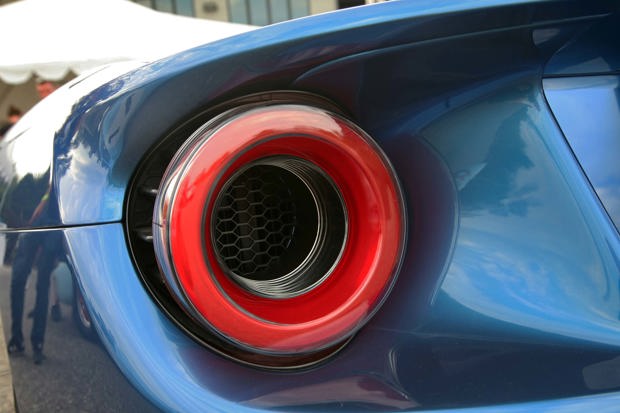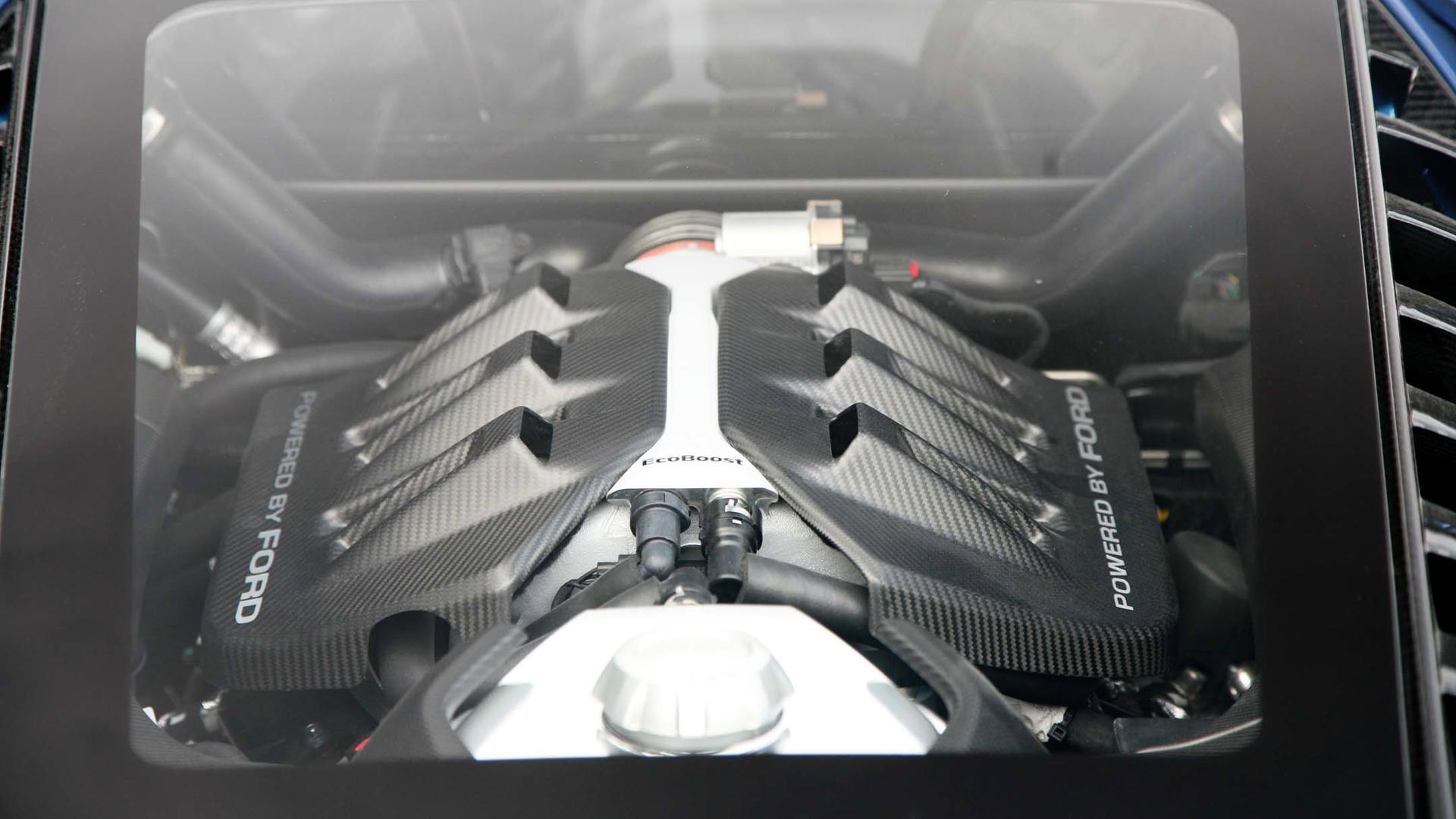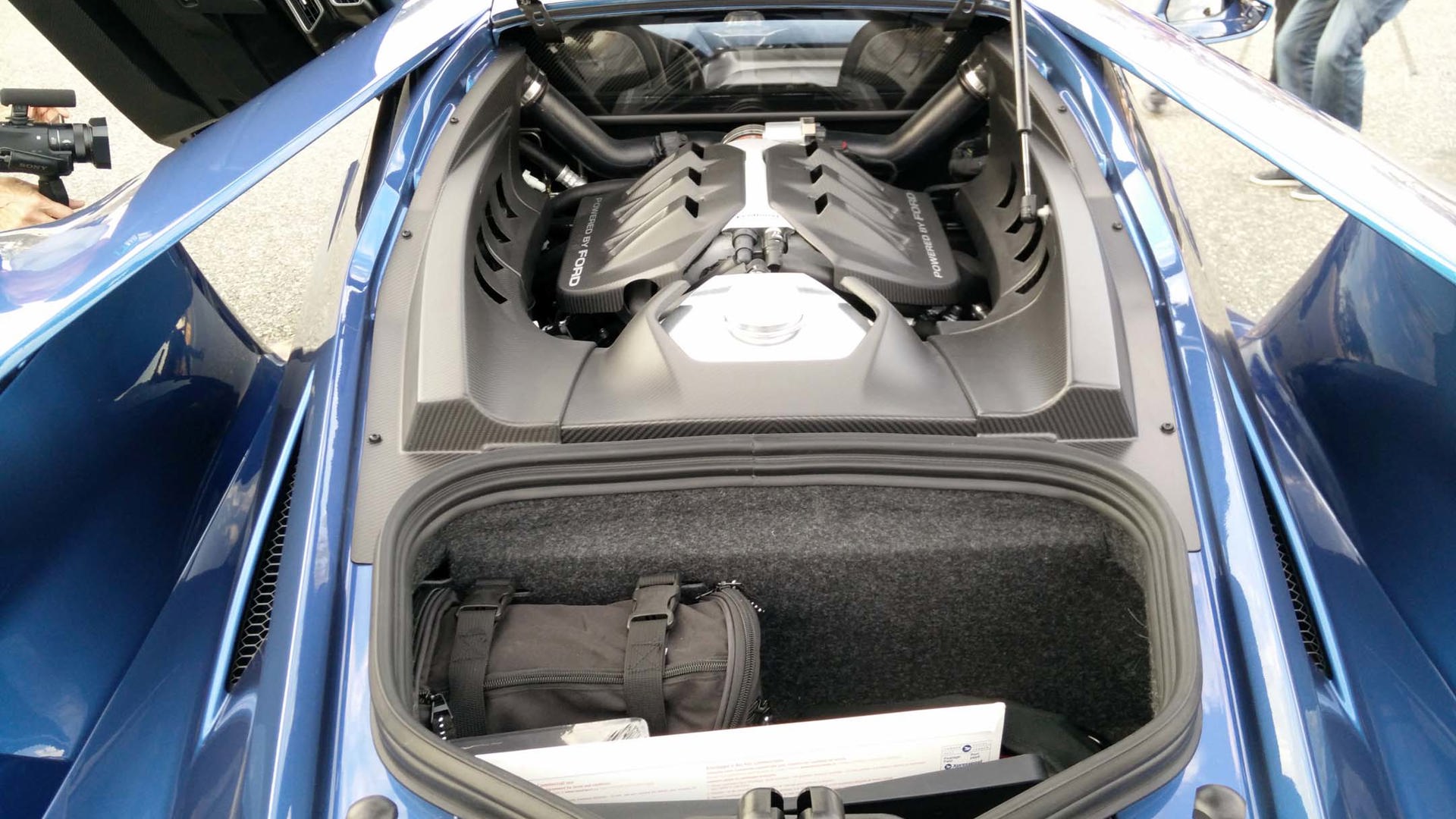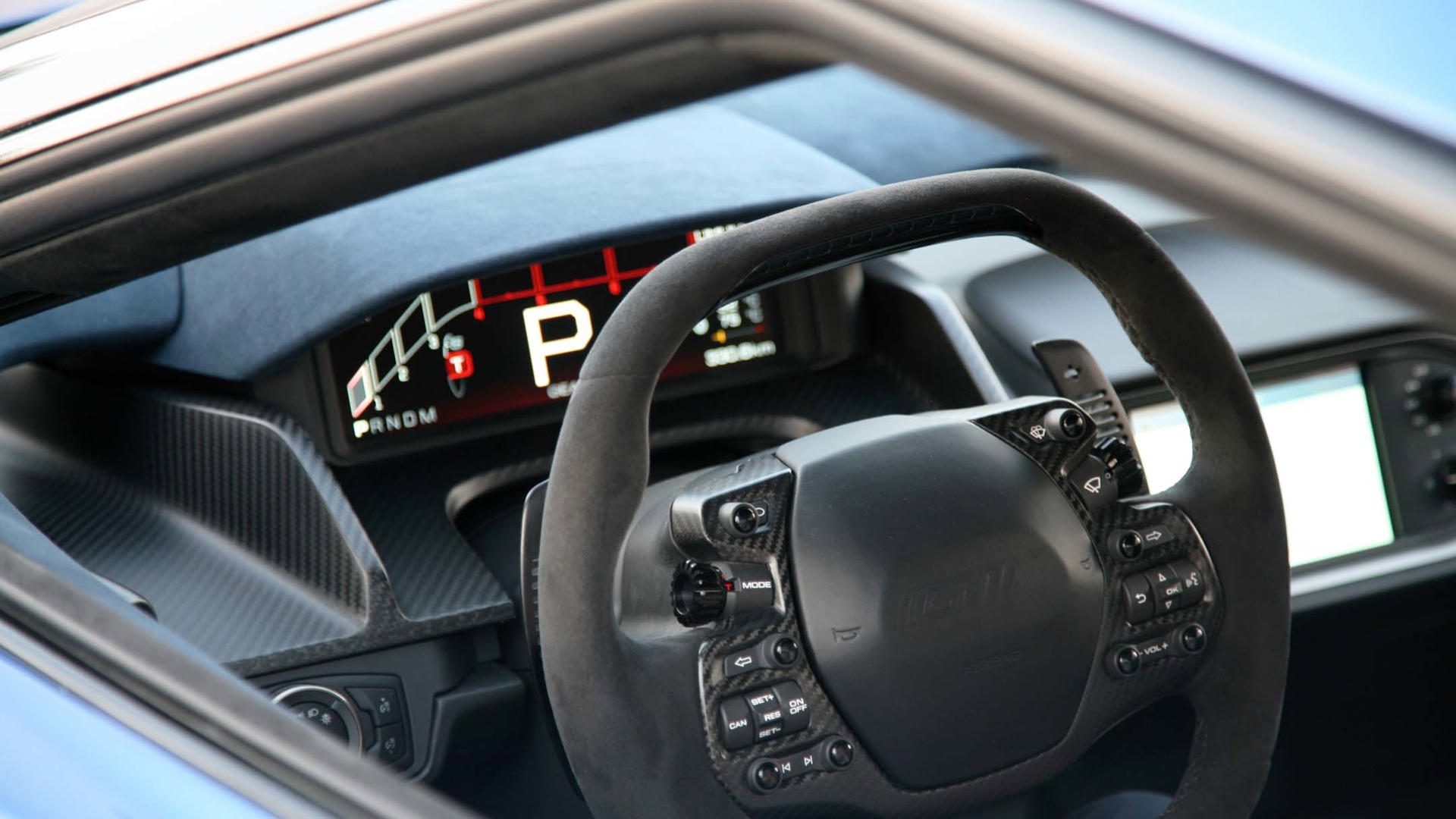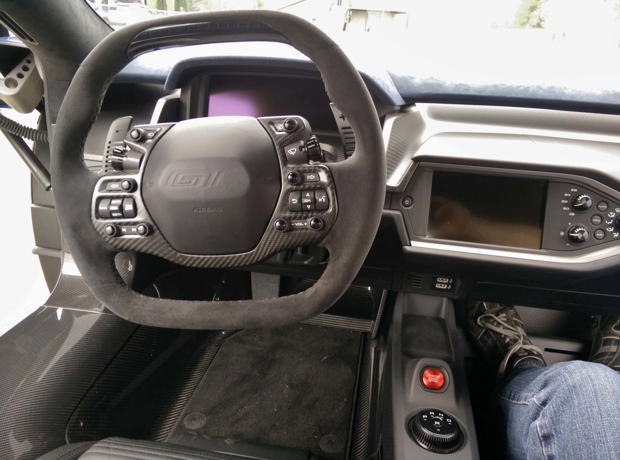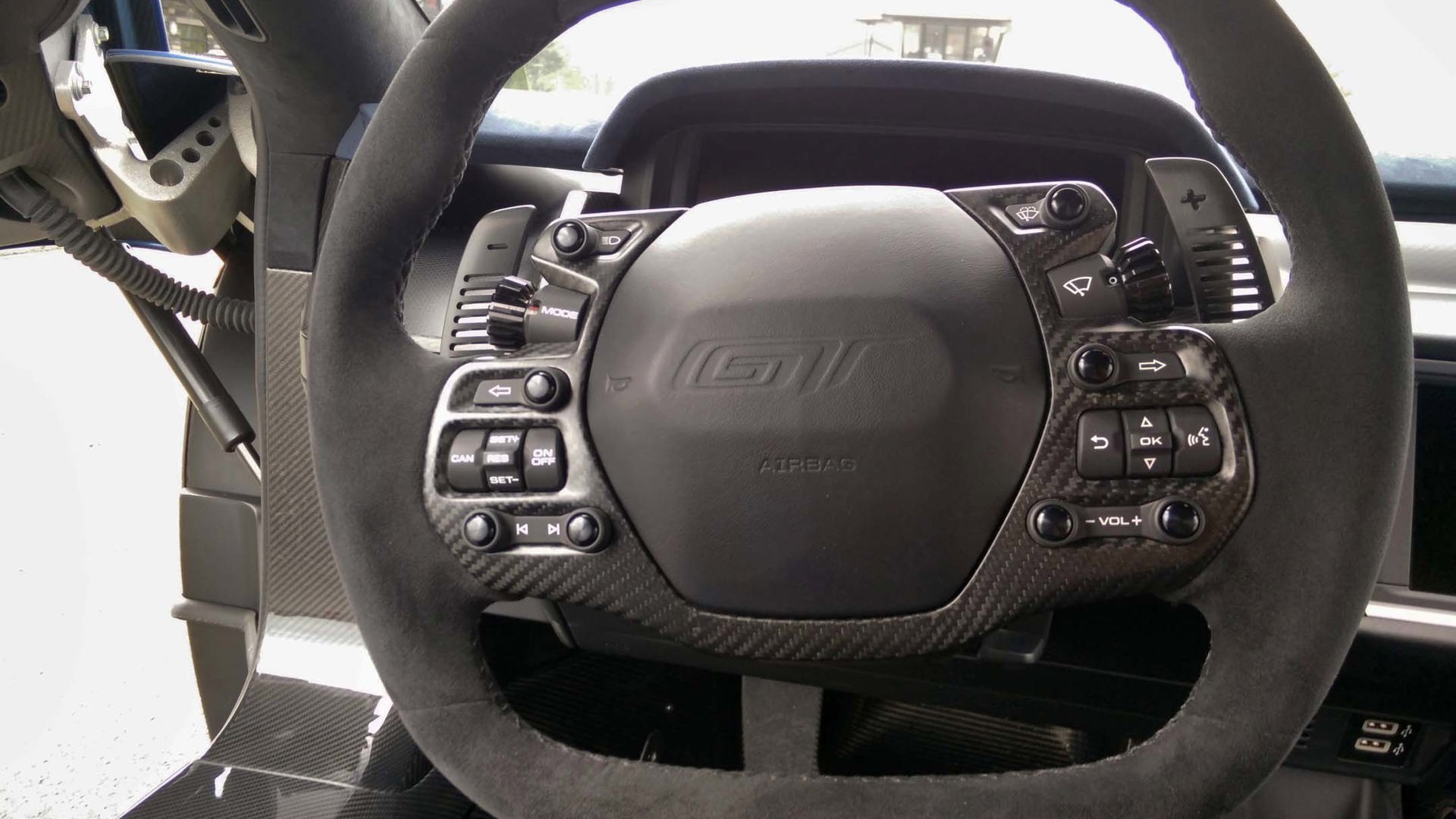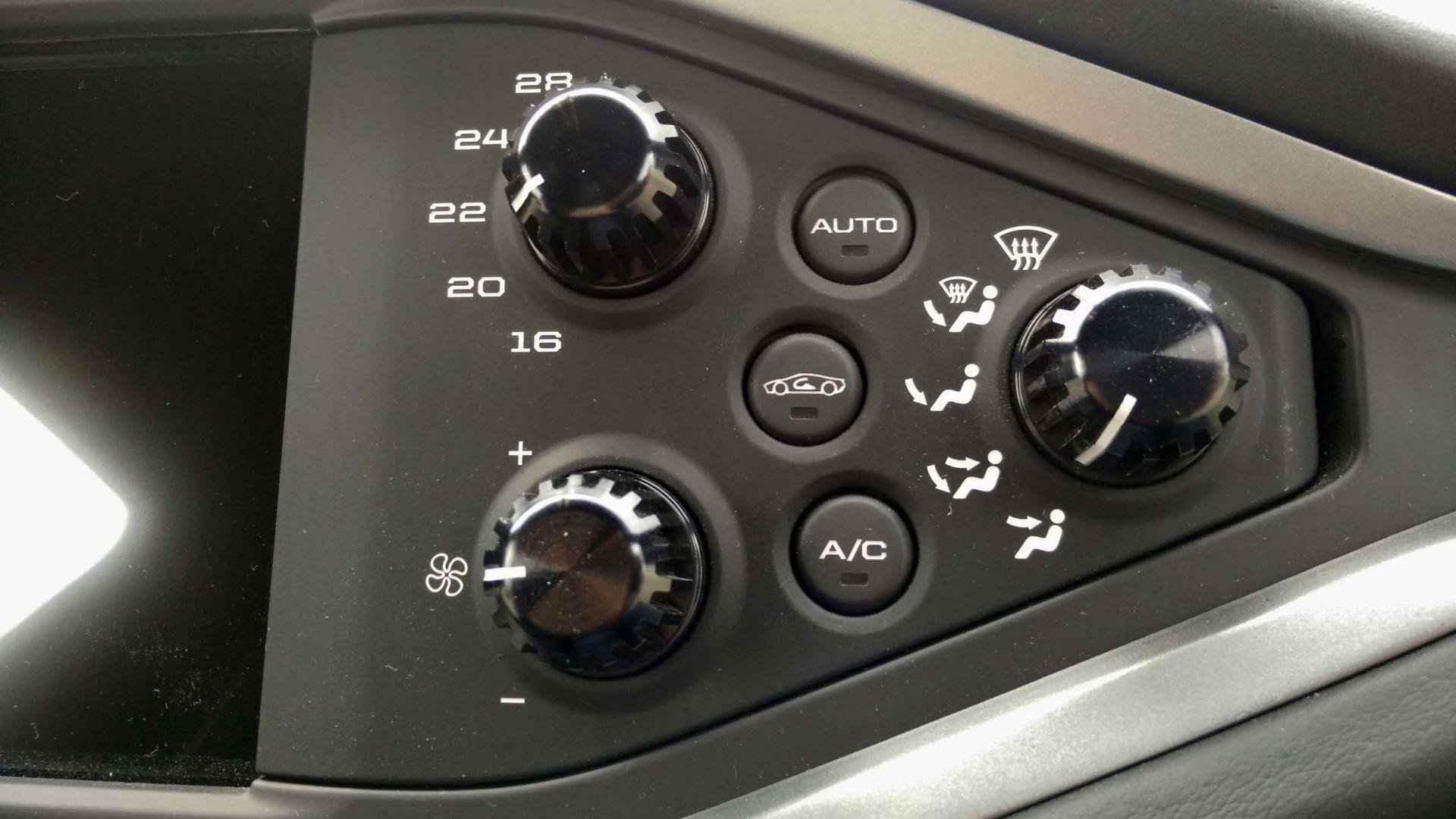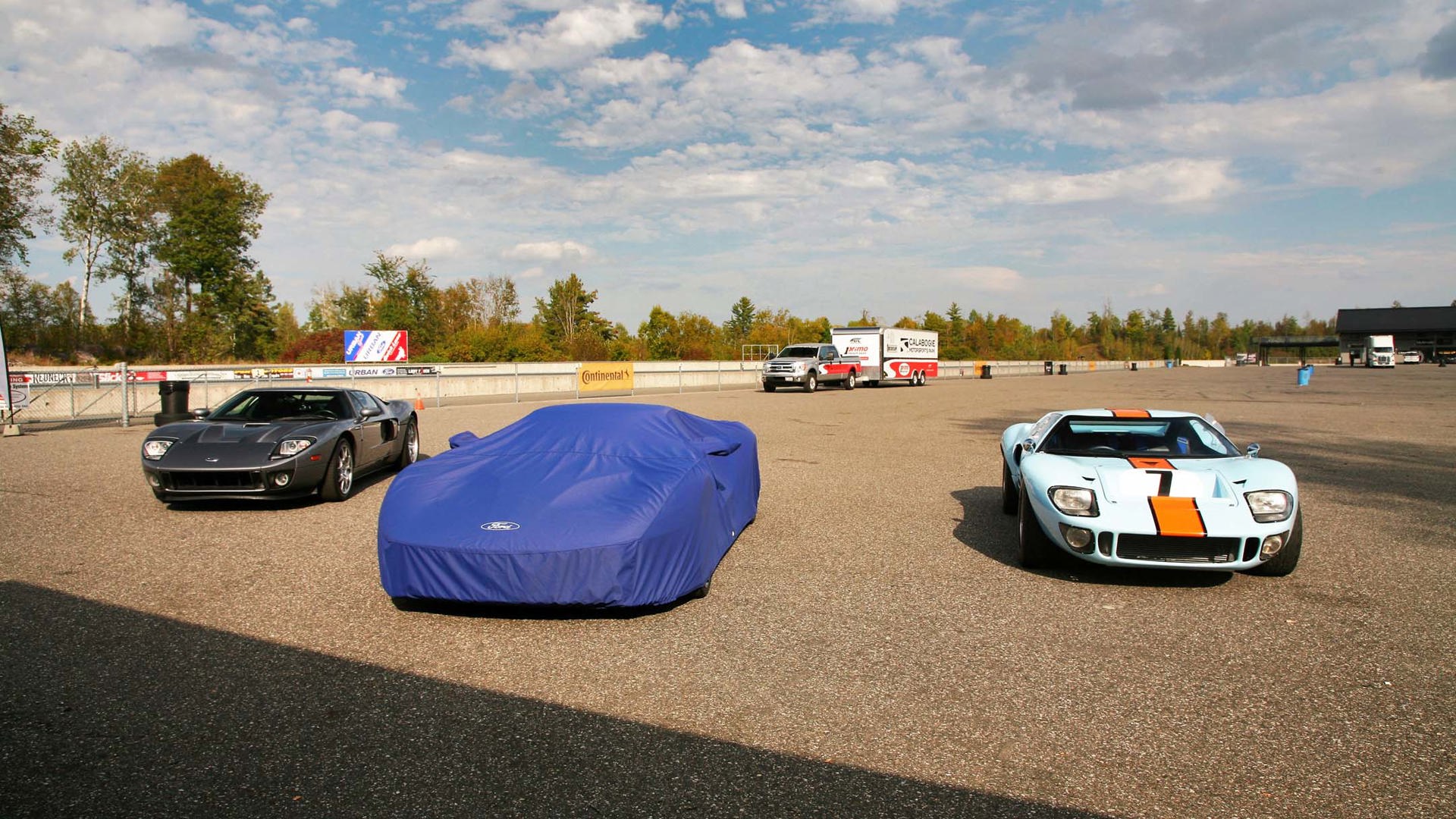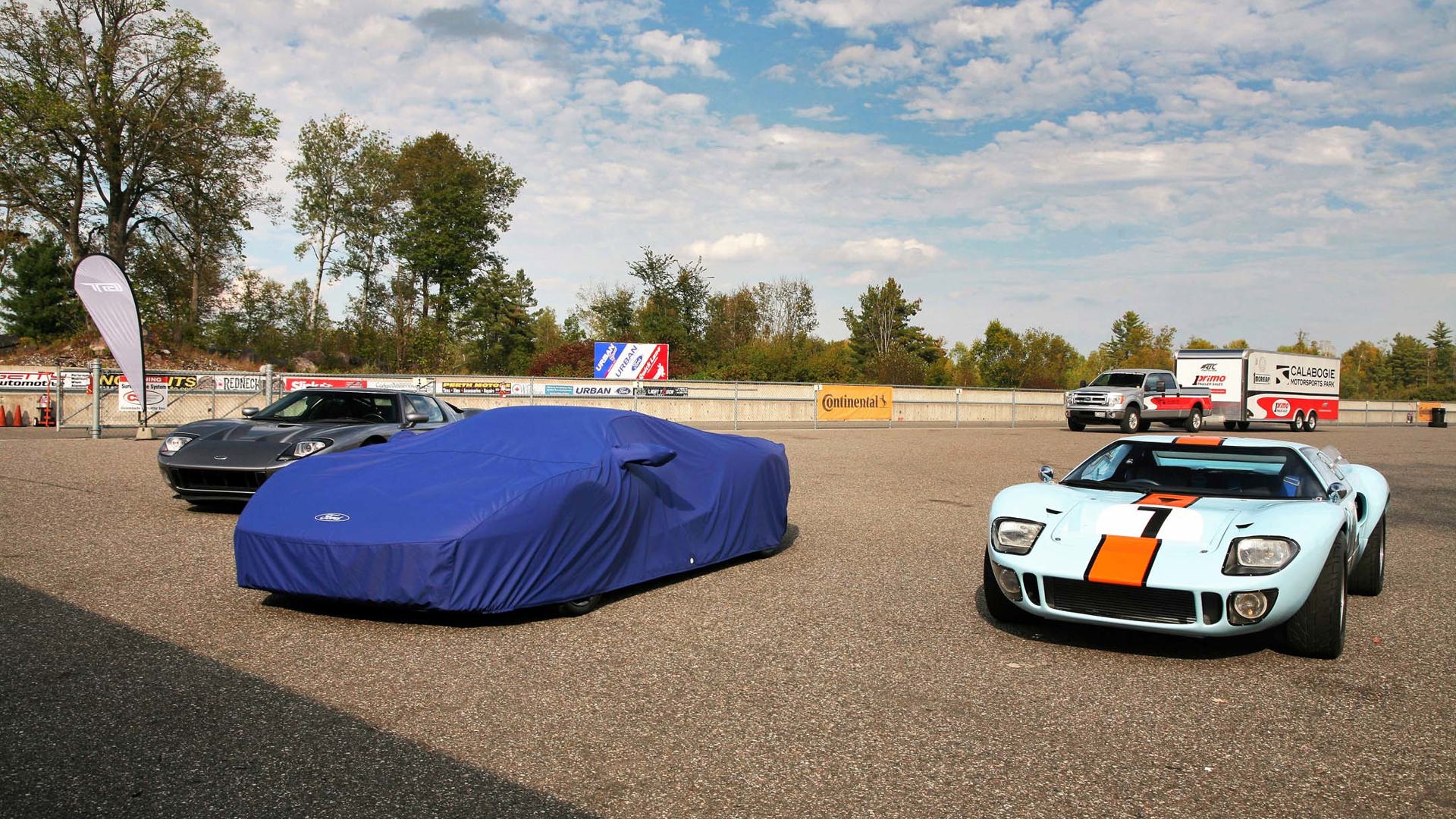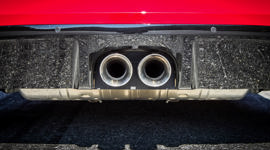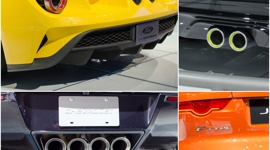While I was spending time in video games trying to unlock the latest and coolest supercar to be released in years, Richard L’Abbé was unlocking it in real life. Mr. L’Abbé is an engineer by trade and has a strong passion for technology and high-speed excellence, and recently became one of the first Canadian owners to receive their 2017 Ford GT. Incidentally, he is also part owner of Calabogie Motorsports Park, where I had the unique opportunity to look, touch, and ride in this amazing feat of engineering – Ford’s supercar and race car for the street.
The 2017 Ford GT is built and designed in Canada by global parts and motorsports firm Multimatic for Ford. Many may not know about this small engineering firm and automotive parts supplier, located in Markham, Ontario. Multimatic is highly regarded and well-known at the highest levels of the racing community and automotive global headquarters, developing everything from the Formula 1 Red Bull team’s suspension to the door hinges on the new Chrysler Pacifica.
But the real story here is the Ford GT. It’s not just any slinky supercar designed to be nice to look at with a big engine in the back and decked out with the latest luxury for the well-heeled. The GT is a different type of supercar, more race car than street machine – yes, it has some creature comforts like air conditioning and a radio, but it doesn’t go much further than that.
The GT was designed first as a race car, when in 2013 Ford decided they wanted to make another go at winning Le Mans in 2016. That didn’t give them very much time to not only design a fast car, but to also make it reliable enough for the gruelling 24-hour race – it was quite the lofty goal.
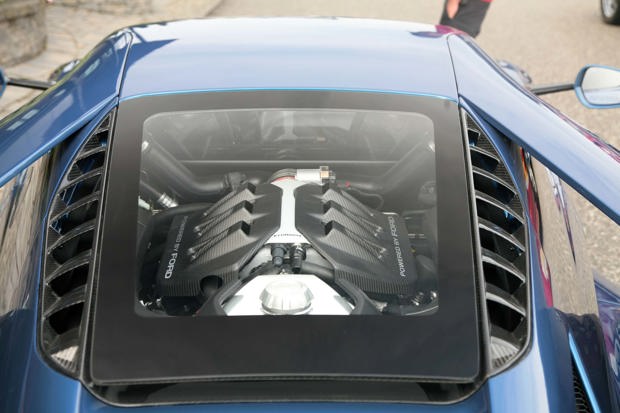
But they did it, and now the road car is here for the lucky 1,000 owners worldwide that had to apply for the mere privilege of purchasing one of these vehicles – at roughly US$450,000 a pop. Having money is not enough, how Ford decides who gets these cars is a secret, though it is known that approximately 85 percent of the chosen applicants had previously owned the last-generation GT model.
The Ford GT is so different from the “average” supercar because it was designed as a race car first and foremost. Those who’ve spent time in a race car will understand best: The chassis is a carbon-fibre tub, the FIA safety cage is built into the monocoque, the front and rear aluminum sections bolt on, the body and suspension bolted on top of that – purpose-built, with no superfluous bushings or isolation techniques to make the occupants comfortable.
Pictures say a thousand words and we are including many so you can behold this car’s beauty with your own eyes. Starting with the interior, there’s carbon fibres everywhere, but that’s not carbon-fibre trim, it’s actually part of the tub structure itself. Seats are permanently affixed to the floor, so no power seats here, heck, not even manual seats – they are solidly bolted to the floor and not adjustable. What is adjustable is the steering wheel column and the pedals, again though, there is no luxurious power adjustment here; it is all a manual affair.
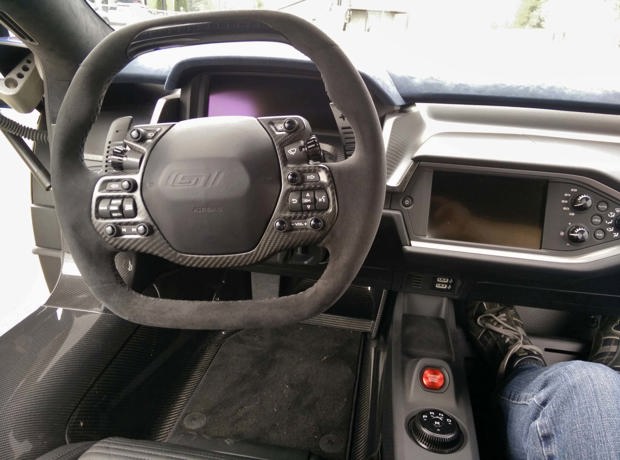
The interior itself is spartan to the extreme: the purpose-built steering wheel houses all the controls the driver needs, mounted directly onto the wheel (no signal or wiper stalks on this car). No automatic climate control either, just a simple manual fan adjustment and some buttons, similar to something you would find in an economy car from the early ’90s. Not to say this is cheap in any way, it’s purposeful and if you get it, you get it. The infotainment system is a modern piece though, with a bright touchscreen display in the centre of the dash.
Walking around the outside is a drool-inducing experience. Even without a degree in aeronautics, it is obvious how the GT was designed to offer maximum downforce at speed. Not only does a rear wing extend from the body work to provide maximum downforce while cornering, it is used as an airbrake as well, and has an extra gurney flap for even more control.
But the real aero heroes here are the front air dams that adjust front downforce application in conjunction with speed and rear downforce. The sculpted lines and tunnels around the bodywork are not there to make this car look fast, but to tunnel air flow around the vehicle efficiently to provide downforce when needed while offering a slippery surface for high-speed runs as well. Iin other words, they are there to make it go fast, not just look fast.
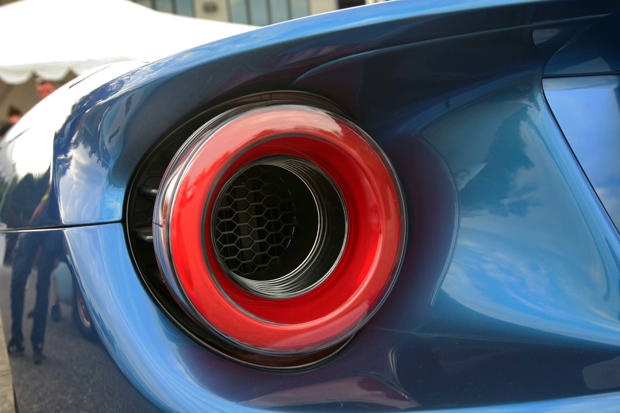
Small details that may not be noticed at first are everywhere on this vehicle. To name a few, the driver’s side wing mirror and passenger side ones are in different relative locations on their respective doors to enable better visibility from the fixed driver’s seat. The tail lights are these cool round glowing “donuts” that protrude from the body work. Why not use a simple flat light? Because as air flows into the engine bay from the sides, hot air needs to escape, and it does so through the lights – it’s kind of genius.
Of course all of this aero and technology needs to have the power to back it up, right? How about 647 hp and 550 lb-ft of torque? For a car that weighs in at 1,385 kg I’d say it’s more than enough – it’s the fastest Ford production vehicle ever built. What’s most surprising is that it comes from a fairly small block, a 3.5-litre twin-turbocharged EcoBoost V6 engine, one not all that different from the 3.5-litre V6 available in many other Ford vehicles.
Although I didn’t get to drive the Ford GT (who in their right mind would let me?), I did get a ride around Calabogie Motorsports Park as a passenger and let me tell you this – mind blown.

Recently I’ve had the opportunity to drive a McLaren, some Lamborghinis, and Ferraris around this very same track. I’ve had the pleasure of being a passenger in these cars as well. They are fast, comfortable, and exciting. But the Ford GT is a whole other level of awesome. It truly feels like it is on rails. The engine is loud and intrusive in the cabin, although L’Abbé assured me he doesn’t notice it being so loud on the street, due to the seven-speed transmission keeping the revs low at all times.
Although due to break-in restrictions he was not able to fully open the car up, we were easily scampering around the track at speeds that would be wide open throttle in a normal car, while this car was just cruising as if on a Sunday drive – I can only imagine what it would feel like at full chat.
The Ford GT was not only designed to be a race car, but was used and continues to be used as a test bed for new technologies, to further enhance and benefit future mainstream Ford cars, trucks, and SUVs. The use of exotic materials, new manufacturing techniques, and engineering discoveries during the GT product development process will trickle down to the mainstream over the next generations of Ford vehicles.
The GT is one incredible feat of engineering, no doubt. If you would like to see this wonderful piece up close and personal, it will be on display at the opening of the new Science and Technology Museum in Ottawa when it re-opens its doors on November 17, 2017, where it will be displayed side-by-side with the 1904 Ford Model C.


